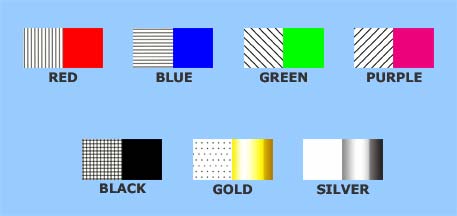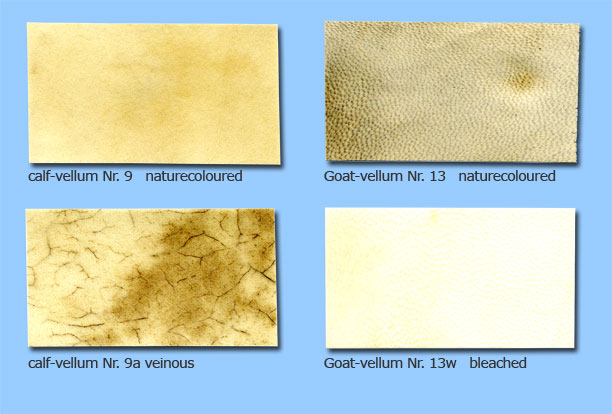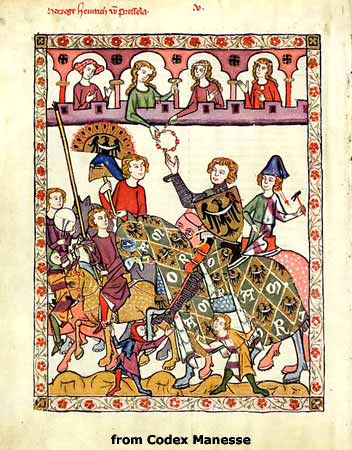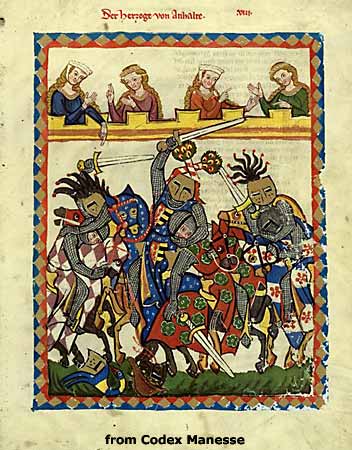|
|
MM
With
my work I offer the creation of your own coat of arms on the basis |
 |
Blazon of coat of arms of Mr. Nys On
green ground in the sign foot a golden mountain, from it increasing |
| Explanation The
name of the founder NYS is a name version of the Greek God |
 |
The
coat of arms NYS illustrated above would represented therefore as follows: |
BUp
to the last point you receive everything automatically after placing an order for the development of a new coat of arms. For the rest the rules of the "Deutsche Wappenrolle" is valid. |
|
"The
pergament, on which one tends to write, is made by mutton -, sheep
-, lamb or calf skins. First of all one must remove wool or hair
from these skins. In order to do this without damaging the skin,
use the lime, slake it in enough Nothing
substantial differentiates the current production process from that
description. Pergament production still requires manual work with
the intuitive feeling for the characteristic of each individual
skin and the special request, which the customer places against
the today's |
bleached
grain. What for genuine Vellum is used?The
famous library to Pergamo might be the probably oldest representative
of the vellum as write material. Vellum has been the write material
for for handwriting and Although vellum has to compete with the paper, it retained itself into our time the reputation to be something special. Accordingly diversified is the use today: Book covers, foto-und collecting albums, briefcases, cassettes, cases, book- and grafic- restoration intending documents, charters, honour citizen letters, master's certificates, winner documents, foundation-stone documents, coat of arms letters, coat of arms pictures, wall messages, prints as business cards, congratulation cards. |
In
the following one you see the four common kinds of vellum for my coat
of arms drawings. Click on the four pictures, for an increased representation. |
|
 |

